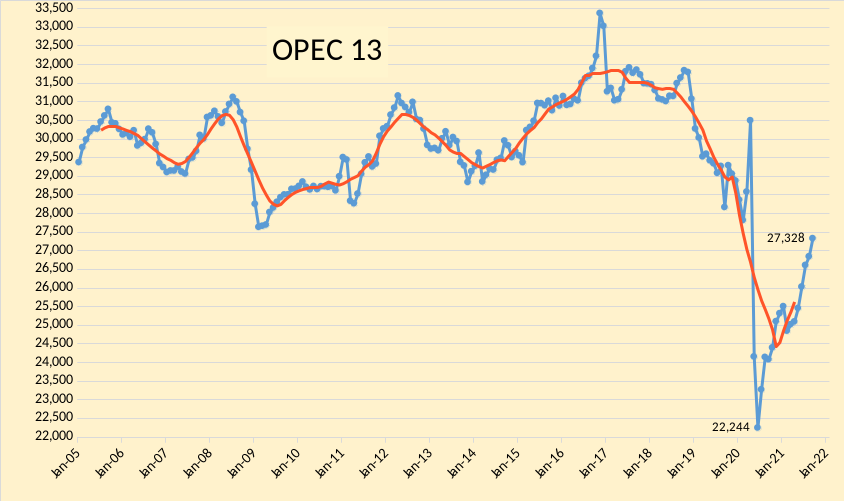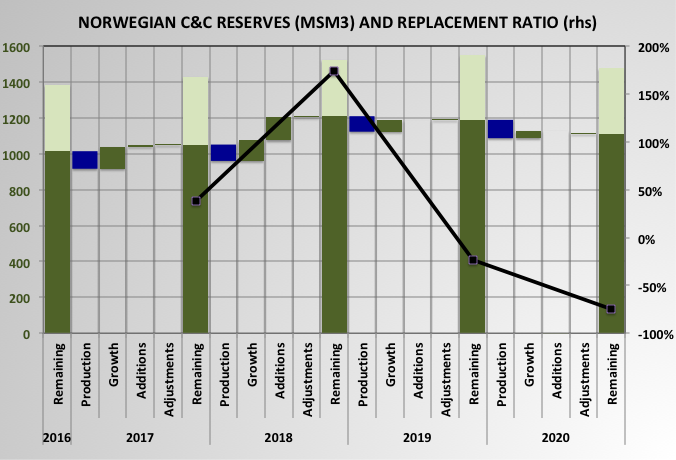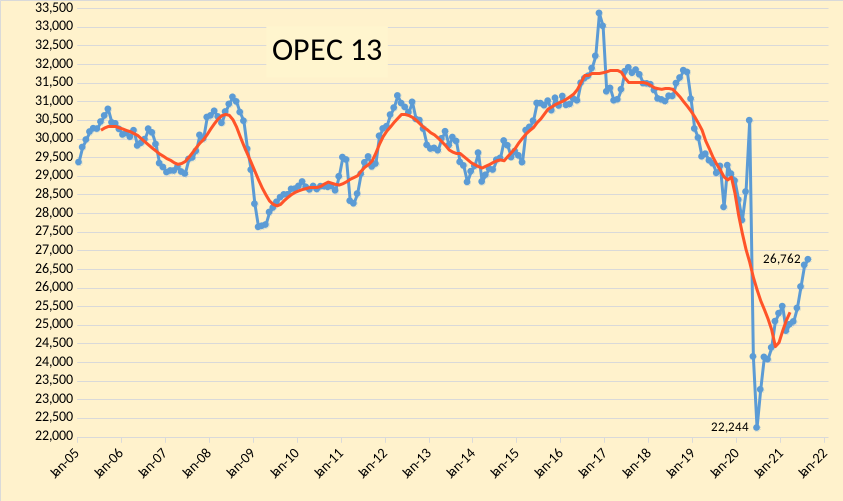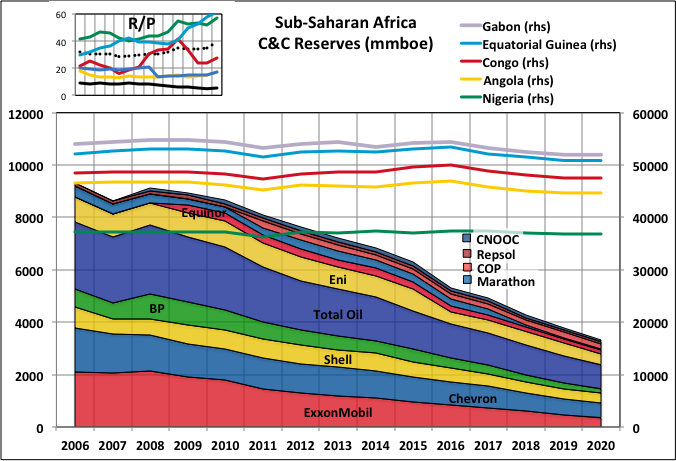A Guest Post by George Kaplan
Annual Production

Overall Norwegian oil production peaked in 2000 but, thanks to the Johan Sverdrup discovery, it is heading for a secondary peak in the next couple of years. Phase I of the development started in 2019 and has design capacity of 440kboed (70kSm3/d) and Phase II is due in late 2022, raising the total capacity to 700kboed of which 535kbpd (85kSm3/d) is crude. The development uses predrilled wills over which the platforms are installed and tied-in, so ramp up was, for Phase I, and will be, for Phase II, rapid. To find a field this size in a mature basin (it is in the North Sea) is unusual, possibly unique so far in offshore oil developments.
For some years Troll has been the largest single oil producer, coming from horizontal oil wells exploiting the oil rim in one half of the field, but recently Troll III was started which produces from the gas cap above the rim, so oil production will now fall.
In the chart green bands are fields in the North Sea, blue-green those in the Norwegian Sea, and the couple of thin blue ones those in the Barents Sea. The 2021 values are only through July.
Read More


